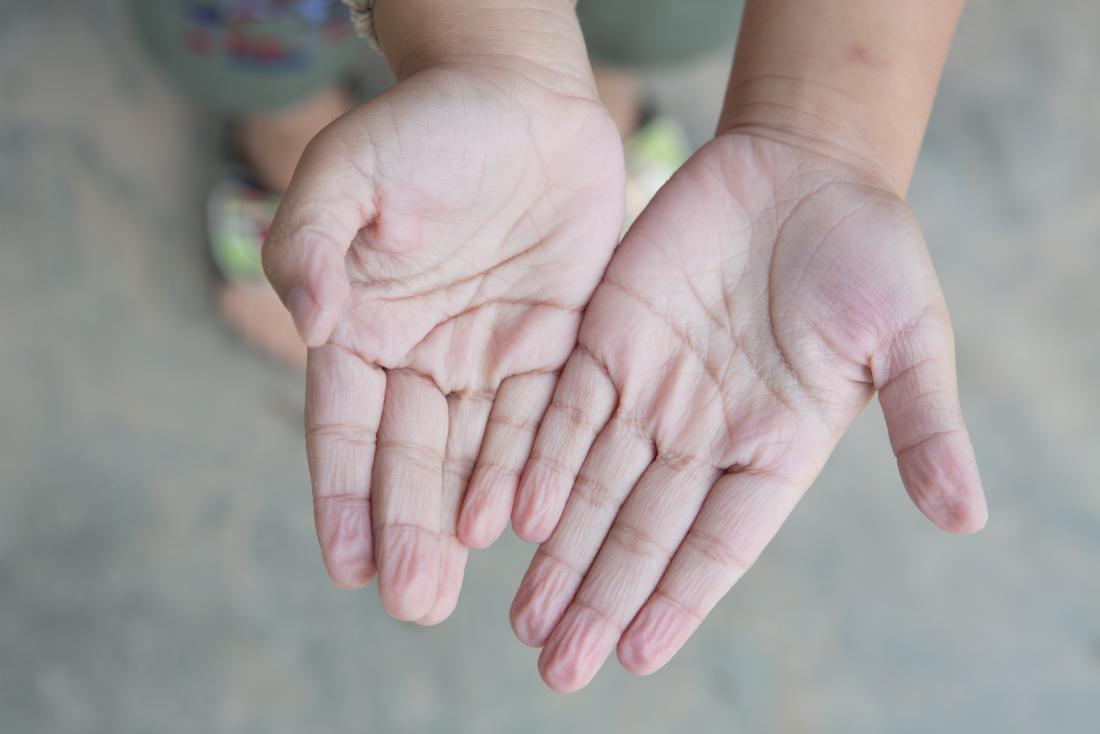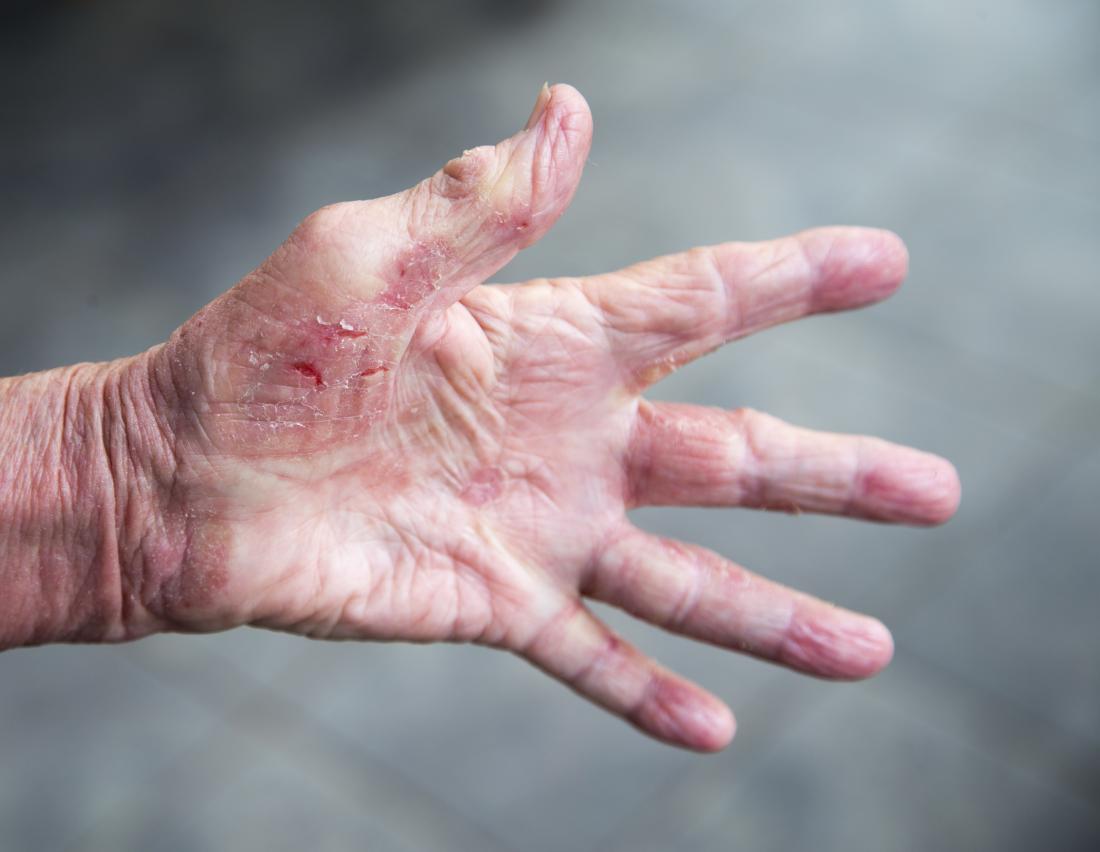Why are my fingers pruney or wrinkled? Why Does My Skin Get Wrinkly in Water?
Why are my fingers pruney or wrinkled?
Why Does My Skin Get Wrinkly in Water?
The skin on the fingers can become wrinkly or "pruney" when soaked in water. Pruney fingers may serve an evolutionary role, helping people grip wet objects or objects in water. If wrinkly fingers happen without being submerged in water, it could be a sign of a medical problem.
 Fingers can become "pruney" after a long bath or swimming.
Fingers can become "pruney" after a long bath or swimming.
 Eczema cause the skin on the fingertips to become wrinkled.
Eczema cause the skin on the fingertips to become wrinkled.
Why Does My Skin Get Wrinkly in Water?
Why are my fingers pruney or wrinkled?
Last reviewed
The skin on human fingers and toes is known as glabrous, meaning it is smooth and hairless. When it has been in contact with water for a long time, the glabrous skin on the fingers can look like a prune.
Most people are likely to know the common experience of pruney figures after a long bath, swimming, or washing dishes. It may be more likely to happen in warm water than cold water.
What causes pruney fingers?
 Fingers can become "pruney" after a long bath or swimming.
Fingers can become "pruney" after a long bath or swimming.
Pruney fingers occur when the nervous system sends a message to the blood vessels to become narrower. The narrowed blood vessels reduce the volume of the fingertips slightly, causing loose folds of skin that form wrinkles.
Scientists still do not fully understand the purpose of the fingers wrinkling when exposed to water or cold temperatures.
A small study in 2013 suggested that it is easier to grip objects in water with wrinkled fingers, meaning that the phenomenon may be an evolutionary change that helps humans adapt to wet conditions.
However, a 2014 study found contradictory results and concluded that finger wrinkles due to water exposure did not affect how well humans could handle wet or dry objects.
Immersion in water is the most common cause of pruney fingers. There are other, less common causes of wrinkling or puckering of the skin on the fingers, however.
Pruney fingers are not usually the only symptoms of a medical condition. If a person does frequently experience pruney fingers due to a medical condition, they will often appear alongside other symptoms.
Conditions
The following conditions may cause pruney or wrinkly skin on the fingers:
Dehydration
 Eczema cause the skin on the fingertips to become wrinkled.
Eczema cause the skin on the fingertips to become wrinkled.
Dehydration can affect the skin, making it feel dry and cold. The skin on the fingertips may look shriveled.
Similarly, if a person gently pinches the skin on the back of their hand, then it may not spring back as quickly as usual.
Older adults, children, and babies have a higher risk of dehydration than other groups. People may be at more risk of dehydration in hot weather, if they are unwell, or if they have been exercising.
Other symptoms of dehydration include:
- dry mouth and lips
- headache
- not peeing as much as usual
- dark yellow pee
- feeling dizzy
- feeling confused or irritated
Vomiting and diarrhea can also cause dehydration. Anyone experiencing these symptoms may need to replace the electrolytes they have lost with over-the-counter (OTC) oral rehydration products. A pharmacist can advise on which products to use.
Raynaud's disease
Raynaud's disease is an extreme sensitivity to cold. It affects the small blood vessels that supply blood to the extremities of the body, including the fingers and toes.
The key symptoms of Raynaud's disease are fingers turning white or blue in the cold, numbness, and tingling. The skin on the fingertips can also look puckered, wrinkled, or pruney. Stress can also trigger symptoms.
There is no cure for Raynaud's disease, but a person with the condition can take steps to reduce stress levels and ensure they do not get too cold. For symptom management, people can take calcium channel blockers.
Eczema
Eczema is a condition that causes skin inflammation, rashes, itchiness, and redness. People with eczema experience flare-ups, followed by periods of time with fewer symptoms.
Atopic dermatitis is a long-term form of eczema. It causes red, dry skin that may itch or swell. Atopic dermatitis commonly affects the hands and fingers, backs of the knees, and inside the elbows.
Eczema dries out the skin and can cause it to wrinkle or pucker. The fingertips may look pinched.
Diabetes
Diabetes affects the body's ability to control blood sugar levels. People with diabetes may be more at risk of developing several skin conditions.
Conditions that can affect the fingers include:
- bacterial infections
- fungal infections
- disseminated granuloma annulare
Bacterial and fungal infections can affect the skin around the nails and between the fingers. Bacterial infections often cause the skin to become red, swollen, and possibly wrinkled.
Fungal infections usually cause itching and redness. They often create raised areas of skin.
Disseminated granuloma annulare is a rash that affects the extremities, such as the fingers or the ears. The rash looks like raised red rings on the skin.
Comments
Post a Comment